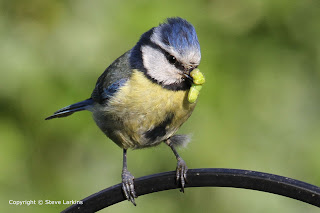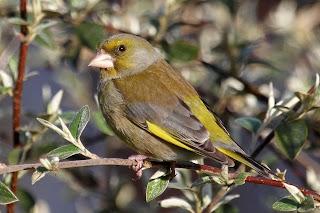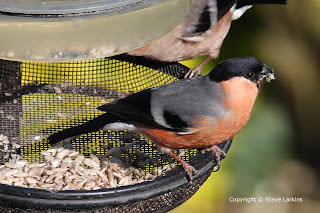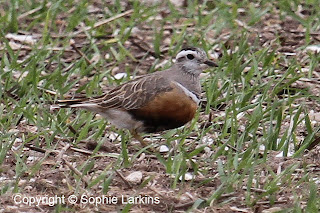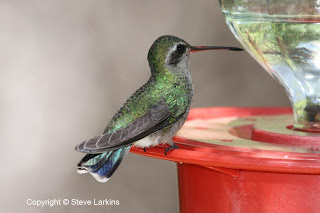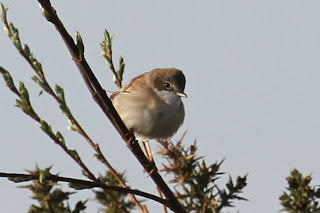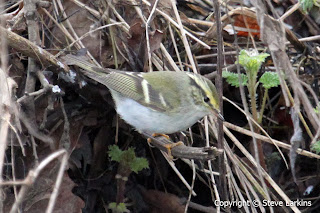Spring is a busy time at the Greenham Birding feeders and unusually for May we're still getting a pair of Siskins regularly feeding on Nyjer and Sunflower Hearts. Presumably they think that it's still winter, which is understandable given the low temperatures this week!
Bullfinches Nesting?
We're not sure whether the Bullfinches are building a nest in the dense thorny bushes in our garden. Two males seem to virtually live here now and spend a great deal of time deep in the bushes. The female Bullfinch has been notably absent - presumably she's actively building a nest and/or raising young.
Juvenile Greenfinch
A pair of Greenfinches are also coming regularly and are being joined by a juvenile Greenfinch, who begs for food with limited success. Far from being doting parents, the adult Greenfinches just ignore the baby and continue to stuff their faces with food whilst the youngster looks on with disdain!
Blue Tits hit by the Cold
The Blue Tit has been building in our back garden nest box for what seems like an age, only to be put off by the never ending cold. It remains to be seen how successful this Spring's bird breeding season is, given the cold weather and lack of food. Blue Tits rely on caterpillars to raise their young and the trees are late to leaf this year and food is more scarce.
Feisty Stock Doves
During the last week, we have also enjoyed numerous early morning sightings of a pair of Stock Doves clearing up the leftovers dropped from the feeders. Our opinion of Stock Doves being shy has been changed this week as we saw one seeing off a much larger Wood Pigeon, which appeared scared by all the intimidation.
Experiments with the Canon 7D
We've also been experimenting with our Canon 7D camera and have started using AI Servo mode for birding with some success. This advanced focussing mode continually focusses on a moving subject. Very handy for birds perched on swaying tree branches and it also works well for very active smaller birds which don't stay still for a second!
The Greenfinch pictures (left) were taken when the feeders were moving in the wind and are still pretty sharp, so this more advanced focussing technique works well.
Great Spotted Woodpecker
During a recent early morning trip to West Wood, we were amazed at the number of drumming Great Spotted Woodpeckers to mark the arrival of Spring, complimented by the beautiful carpet of native Bluebells, which are now in full bloom.
The Great Spotted Woodpecker which visits our feeders we are almost sure is a resident of West Wood and we only ever see the male bird, which are easy to identify as they have a bright red patch on the back of their head. The picture (left) does not clearly show the head marking unfortunately.
Woodpeckers are notoriously shy and will leave promptly at the merest sound or sight of human presence!
Click the bird pictures (left) to enlarge them for easier viewing.















